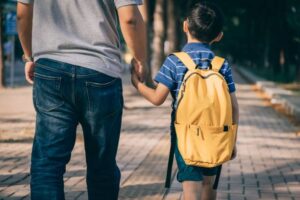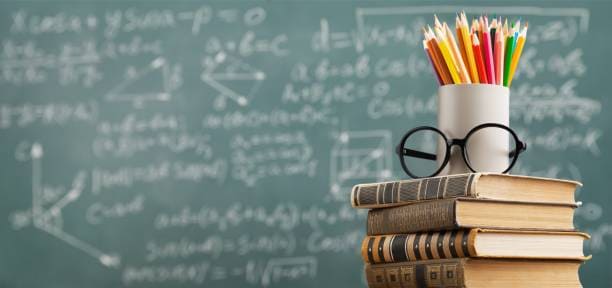How Schools Can Support Arab and Muslim Students

How Schools Can Support Arab and Muslim Students
According to the Arab American Institute, Arab Americans make up about 3.5 million of the population in the United States, which is a very small group given the size of other communities of color in the country. According to the Pew Research Center, Muslims are also one of the largest growing religious communities in the country. The research predicts that by 2050, Muslims will reach a population of over 8 million people.
Let us add one more statistic: According to the Institute on Social Policy and Understanding, more than 80 percent of television media coverage of Islam and Muslims in the United States is negative. These statistics matter because given the small numbers of both communities, if you were to conduct a curriculum audit on the topics that include the study of Arabs/Muslims or both, one would see the reflection of the negative statistics within the curriculum. The resources used would be hyperfocused on the teaching of Muslims in the past (i.e., Islamic Spain) or focused on teaching about the monolith of Arabs according to geopolitical events that involve the United States (i.e., 9/11; invasion of Iraq, Afghanistan, etc.). This creates a vacuum of understanding reflecting stereotypical, xenophobic, and biased ideologies. Although many well-intentioned educators try to write a curriculum that is unbiased, the result reflects the “danger of a single” story approach.
We now live in an education climate that is working on creating a more culturally responsive curriculum to honor the stories and histories of the many communities that made this country what it is today. This should be no different for Arab and Muslim American stories. Here are the ways teachers can best support their Arab and Muslim students through a social studies lens:
Arabs, Middle Eastern, and Muslim—What’s the difference?: Begin with an understanding of the difference, connection, and diversity of who Arabs and Muslims are to dispel the monolith myth.
The First American Muslims: Many think the first Muslims to arrive in America were from the Middle East or South Asia. That is a huge mistake that leads to the erasure of the largest Muslim population in the United States, including the rich history they contributed, which is that of Black Muslims. This is very important for many reasons:
Dispels the myth about the point stated above.
Shows the diversity of the Muslim population in the United States.
Creates an important narrative about the institution of slavery: Enslaved African Muslims were literate, highly skilled, and continued to practice their religion in the harshest of conditions.
History between China and the Middle East: Teach the connections between geographic regions using historical information showing the continuation of the relationship between countries/regions that developed over centuries. This is important to show the importance of the region of the Middle East as being a crossroads between the East and the West. This can also be expanded to many other countries that have historical trade and cultural exchanges within the region.
In conclusion, showing the diversity, historical significance of a region, and how the development of Arab and Muslim communities developed in the United States and around the world would provide a better understanding of the people, their cultures, religions, and communities. Taking the time to find the right resources to develop a robust curriculum goes a long way for your students.
theresearchpredicts
Meeting the Needs of Arab and Muslim Students in School Spaces
Sawsan Jaber, NBCT, is a curriculum designer, keynote speaker, high school English teacher, and founder of Education Unfiltered Consulting. She was guest-editor of a three-part series on a similar topic that appeared here several years ago:
When speaking about identity, the impacts of being Arab or Muslim or being Arab and Muslim are often at odds with an American intersection. The key to meeting the needs of any student is first knowing who the student is beyond the surface. Who are Arab students? Who are Muslim students?
If we determine the answers to those questions from a holistic sense, we recognize that no group of people who share an identity marker are a monolith; therefore, the role of responsive and equitable teachers is to create opportunities where learning about each other is universal and at the core of the class ethos and community.
One of the things that my students and I agree on in conversations early in the year is that people naturally fear what they do not understand. With red lining and siloing of communities by design, we often do not understand people with backgrounds that differ from our own beyond misrepresentations of who they are in mainstream media. The result of that, coupled with a curriculum that is canonical, can be divisive to eliminating fear. When fear is elevated, people are not very rational. Their decisions, reactions, and interactions are often driven by that fear. Inclusive classrooms have the opportunities to humanize historically criminalized people; this includes Arabs and Muslims. Ultimately, this eliminates the fear.
Let’s consider a high school English classroom, my home. In an informal survey of attempts to be culturally responsive and representative to Arab bodies in class spaces, many teachers chose The Kite Runner as an anchor text. Khaled Hosseni, the author of the text, is not an Arab; therefore, the novel cannot serve as a mirror to those students. Not only is it a misrepresentation of identity, but it also works to solidify and reinforce stereotypes that shadow who Arabs and Muslims are in the mainstream. A culture of fear has been uplifted and normalized, especially after 9/11 and especially after Trump’s racist policies such as the Muslim Ban.
With the weaponization of equity work and the censoring of many culturally responsive texts across our nation, there is more and more of a need for teachers to co-design with students and plan instruction that allows for the integration of their voices. In doing so, ALL students are creating accurate mirrors of their lived experiences, and those mirrors serve as windows for students from varied backgrounds. The more we understand, the less we fear, and ultimately, the stronger the culture and community.
Literacy is a form of liberation; this is the reason oppressors have kept marginalized communities from accessing the abilities to read and write for as long as they could. The power of teaching students to reclaim their identities and narratives through storytelling and sharing their whole selves is exponential. Invite your Arab students to use their Arabic tongue and music when creating their mirrors; translanguaging is one of the most validating teacher practices. It tells students, I see you, and who you are matters. It gives them permission to leave their duality at the schoolroom door and bring their whole selves into your space. Arab and Muslim students are often hypervisible when it comes to bullying and invisible when it comes to advocacy. These are ways to heal them from that history and release them from the shackles of how things have always been.
I tell my students you write for yourself; you create for you. What story do you want to tell and why do you want to tell it? Then I ask them how they would like to tell their stories. In other words, they are creating for themselves because writing has the power to preserve and heal. Because of that, they do not need to translate or adhere to a word limit or structure. Some of my most struggling writers become the most powerful voices. Their creativity is reborn. The purpose of the writing process becomes personal. The work to them becomes necessary and in many cases, a healing source of power.
With the advent of ChatGPT and other AI technology, the intrinsic motivation for the work must be planted within students. Technology cannot weave the identity of our learners in the work, only they can. As our role as educators evolves and the world and our students continue to change, so must our practices. We cannot achieve equity without understanding the bodies we share space with and then working with them to determine how to build their repertoire of tools to coexist, to eliminate the fear of others, to use the tools we teach them as sources of power and as agents of change to heal the world we are in.
Education must work to heal those that have been traumatized by it at all levels, including our Arab and Muslim students. They are often in a third space even with the loudest equity voices. Let’s right the historic wrongs by shifting practice and policy to integrate every student and every narrative, whether they exist in our spaces or not. Ultimately, schools have the responsibility to serve local and global communities. This is how we begin to do it!
Fortunately, we are living in a very conscious period in society, where embracing diversity, equity, and inclusion is becoming an integral component for many institutions. A fundamental step in advancing equity is checking our own biases—explicit and implicit. So when considering how to support Arab and Muslim students, it’s important to understand who these communities are and what their status is in American society.
First things first: Arab and Muslim are not a monolith. Also Arabs and Muslims are not synonymous terms. Arab is an ethnic identity, and Muslim is a religious identity. While some Arabs are Muslim, 60 percent of Arabs in the U.S. are Christians, 35 percent of Muslims in the U.S. are Black, 18 percent of the global Muslim population (2 billion) are Arabs, and India and Indonesia are the most populous Muslim countries.
I am Arab and Muslim American and I remember growing up in a very diverse neighborhood (San Francisco’s Tenderloin District) but still feeling very isolated and unseen decades ago. This might sound like an oxymoron, “diverse neighborhood” yet “isolated and unseen”? There are an array of reasons why I felt this way and why many of your Arab and Muslims may also feel this way. You see, Arab Americans are still categorized as “white” by the U.S. Census (the “why” behind this classification is a subject for a different article). Why does this matter you ask? Well simply put, Arabs are not white.
Arab heritage is rooted in ancient culture—the Arabic language, religion, music, poetry, and traditions that date back thousands of years and span over 22 diverse countries. Even if we look past the cultural differences and the importance of cultural authenticity, Arab classification as white leads to our cultural invisibility and perpetuates a cycle of undocumented socioeconomic disparities. Quite frankly, we do not have an accurate number of how many Arab Americans are in the U.S., how many are in need of services, and because of this, this community is not only misrepresented, but Arab American communities are also gravely underresourced. This is a huge systemic equity gap.
While Arab and Muslim American communities may have different norms, there are a lot of parallels between their lived experiences—especially post-9/11. Arab and Muslim American students have reported being bullied at an alarming rate. According to a 2020 survey by the Institute for Social Policy and Understanding, 51 percent of Muslim families reported that their child had been bullied because of their faith. Anti-Muslim bigotry or Islamophobia is ugly, and it can really hinder the well-being of students impacted. It can show up as verbal assaults, harassment and can escalate to physical.
It’s important to note that Islamophobia is a system that transcends borders, and many Arab and Muslim American students may have family members impacted by this system from many fronts. Whether it’s immigration, work bias, housing discrimination, and so many other inequities, it can cause a disruption in learning and have negative effects on their overall sense of belonging. It’s important for educators to be able to identify this behavior and be equipped to intervene, when necessary.
Politicizing racial and cultural disparities in education is not new. As an educator, take the time to understand the history of Arabia, Islam and dive into works by Arab and Muslim American scholars, such as Edward Said, Dalia Mogahed, or Khaled Beydoun. Their analyses provide a comprehensive primer on why the ‘West’ has painted the ‘East’ as inferior and perpetuated racist stereotypes that continue to affect so many Arab and Muslim Americans today.
Check textbooks for cultural bias and diversify your curriculum, increasing positive Arab and Muslim representation.
Create a safe and inclusive space and ensure materials and visuals in your classroom reflect that safety and inclusivity.
Center Arab and Muslim voices by inviting Arab- and Muslim-led community partners and leaders into your classroom
Educators have an enormous task and gift of transforming today’s pupils into becoming tomorrow’s leaders. This change starts in the classroom. We know that no one can do this work alone: “It takes a village,” as African cultures have taught us. When educators center diverse community voices and allow access to collaboration, you can teach to change the world.



